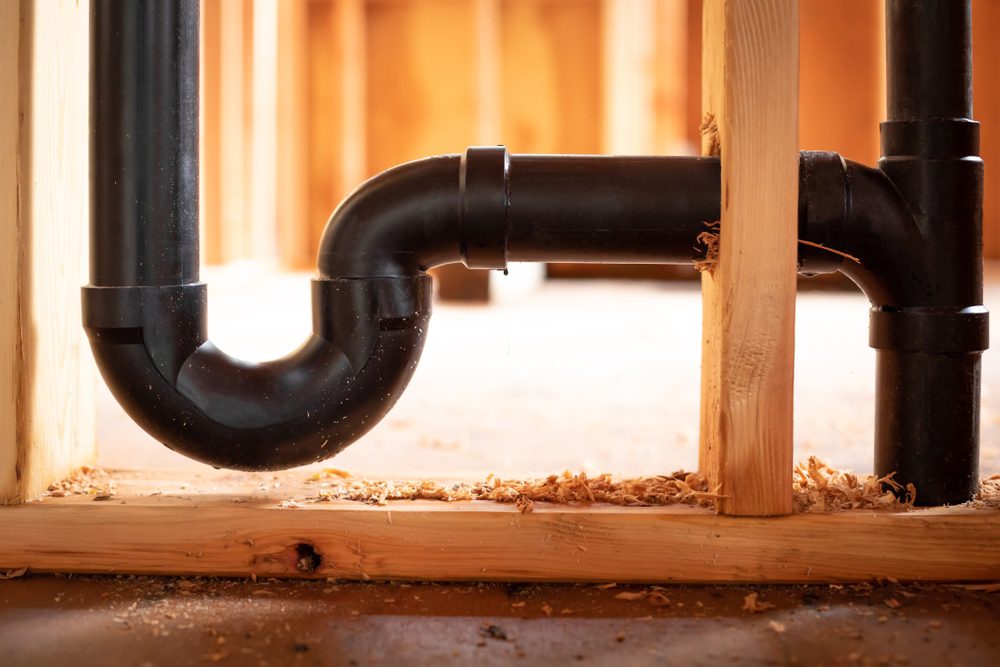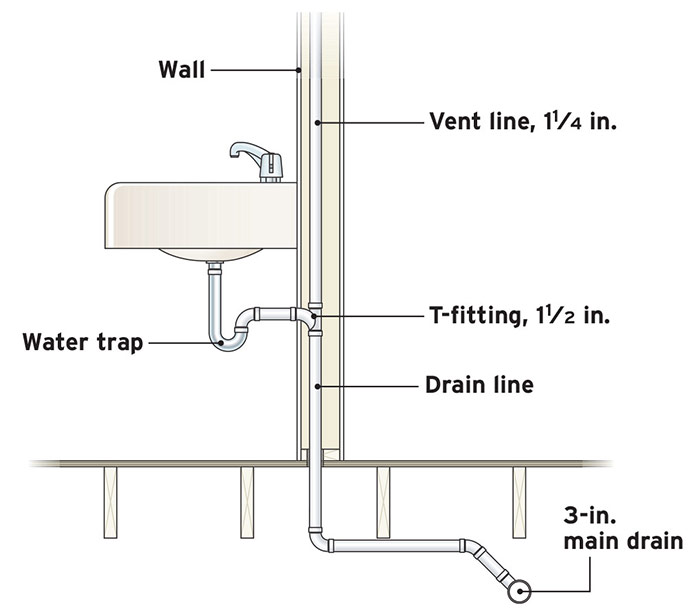Maintaining Correct Ventilation in Your Plumbing System: Why
Maintaining Correct Ventilation in Your Plumbing System: Why
Blog Article
How do you really feel in regards to What Is A Plumbing Vent & How Do They Work??

Proper air flow in plumbing systems is frequently overlooked, yet it is important for preserving the performance and safety and security of your home's pipes. Air flow assists regulate air pressure, avoid the buildup of damaging gases, and make sure the effective removal of waste. In this guide, we will certainly discover the relevance of correct pipes air flow, how it works, and the benefits it brings to your pipes system.
Understanding Ventilation in Pipes
Air flow in plumbing describes the network of pipes that enable air to move via the drainage system. These vents serve several functions, consisting of managing air pressure within the pipelines, preventing sewage system gases from getting in the home, and assisting in the smooth flow of wastewater.
Exactly How Air Flow Works in Pipes Equipments
Air Pressure Policy
Correct ventilation preserves well balanced air pressure within the pipes system. When water moves via pipes, it displaces air. Without appropriate ventilation, this displacement can produce negative pressure, causing slow down drains or siphoning of water from catches, which can trigger unpleasant odors to leak right into the home.
Preventing Sewer Gas Accumulation
One of one of the most crucial features of pipes vents is to prevent drain gases, such as methane and hydrogen sulfide, from gathering within the home. These gases can pose significant health and wellness threats and are highly combustible. Vent pipes permit these gases to run away safely outside.
Assisting in Waste Removal
Air flow helps in the efficient elimination of wastewater by preventing airlocks in the water drainage system. When air can stream openly through the vents, it allows water and waste to stream smoothly with the pipes, reducing the threat of blockages and backups.
Sorts Of Plumbing Vents
Key Stack Vent
The major pile air vent, additionally called the air vent stack, is the main vent in a plumbing system. It prolongs from the main drainpipe align with the roofing, enabling gases to leave and fresh air to go into the system.
Branch Vent
Branch vents connect to the major stack vent and serve individual components, such as sinks, toilets, and showers. These vents make sure that each fixture has appropriate air flow to function correctly.
Air Admittance Shutoff (AAV).
An Air Admittance Shutoff (AAV) is a one-way shutoff that permits air to enter the plumbing system without the need for a standard air vent pipeline prolonging with the roof covering. AAVs are generally made use of in improvements or locations where setting up a typical air vent is impractical.
Indications of Poor Air Flow in Plumbing.
Slow Draining Fixtures.
If your sinks, tubs, or commodes are draining gradually, maybe an indicator of inadequate ventilation. Insufficient air circulation can produce a vacuum cleaner effect, making it challenging for water to drain appropriately.
Gurgling Seems.
Gurgling noises coming from drains are usually an outcome of air being drawn via water catches as a result of adverse pressure in the pipelines. This is a clear indication of not enough air flow.
Unpleasant Odors.
Sewage system odors inside your home are a red flag that your plumbing system is not effectively ventilated. This could indicate that drain gases are not being properly vented outside, causing possibly harmful conditions.
Usual Air Flow Blunders.
Insufficient Vent Sizing.
Utilizing small vent pipelines can result in inadequate air circulation and pressure inequalities in the system. It's vital to make use of vents that satisfy the details demands of your plumbing system.
Improper Vent Positioning.
Placing vents as well far from the components they offer can lower their performance. Proper placement makes certain that air can move freely and efficiently through the system.
Ignoring Code Demands.
Building regulations provide certain standards for plumbing ventilation. Neglecting these codes can lead to a system that falls short to function properly and might bring about costly repair services or carcinogen.
Benefits of Proper Ventilation.
Boosted System Efficiency.
Appropriately ventilated plumbing systems operate extra efficiently, with fewer obstructions, faster draining, and less strain on the pipelines. This efficiency expands the life expectancy of the pipes system.
Improved Air Quality.
By avoiding sewer gases from entering your home, appropriate air flow adds to far better indoor air quality, making your living environment healthier and a lot more comfortable.
Avoiding Water Damage.
Ample ventilation assists protect against water from being siphoned out of traps, which can cause sewer gases getting in the home and causing water damage gradually.
Actions to Ensure Appropriate Ventilation.
Consulting Pipes Codes.
Constantly seek advice from neighborhood pipes codes when making or changing your pipes system. These codes offer the essential guidelines for correct venting and guarantee your system fulfills safety and security requirements.
Normal Examination and Maintenance.
Normal evaluations can assist determine potential air flow concerns prior to they come to be major problems. Maintenance tasks, such as cleansing air vent pipes and checking for blockages, are essential for keeping the system in good working order.
Specialist Installation.
For new installations or major alterations, it's wise to hire a specialist plumbing professional. They have the know-how to make sure the air flow system is appropriately made and set up according to code.
Final thought.
Correct air flow is a vital part of any type of pipes system, guaranteeing that it functions effectively and safely. By comprehending the significance of air flow, identifying the signs of bad air flow, and taking actions to maintain your system, you can stop pricey problems and safeguard your home's air top quality.
What is a Plumbing Vent and it's used for?All plumbing systems in residential and commercials construction have a plumbing vent. It doesn’t just vent unwanted odors from the drainage system to the outside; it actually serves an important purpose by supplying air to the system.
The plumbing drainage system is actually called a drainage, waste and vent (DWV) system. When water flows down the piping, an air supply (vent) is needed to allow the water to flow. Think of the vertical pipe as a drinking straw. If you plug the top end of a straw, liquid won’t drain from it.
The DWV system in your building consists of a series of pipes connected to each fixture; they extend above each fixture, and the system terminates at an open pipe that extends through the roof. This piping allows air into the system and prevents unbalanced pressures in the piping.
?The vent also prevents the system from drawing water out of a trap at the fixture with the characteristic “glug-glug-glug” as the drain gasps for air. Plumbing traps should drain smoothly and never “glug” or gasp for air.
If you have a drain that empties slowly or gurgles as it drains, this may indicate a venting problem. If you flush a toilet and the sink gurgles, there’s definitely a vent problem. It is good idea to have a Plumber check this.
https://www.ameliashomeinspection.com/blog/what-is-a-plumbing-vent-and-its-used-for

I recently found that content about while looking around the web. In case you enjoyed reading our page kindly do not forget to pass it around. Thanks a bunch for your time. Return soon.
Schedule Free Estimate Report this page